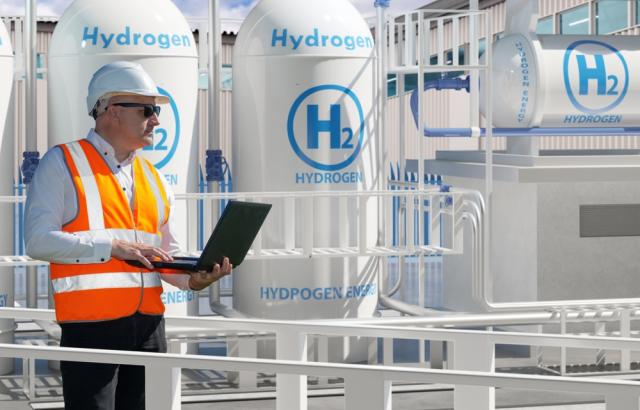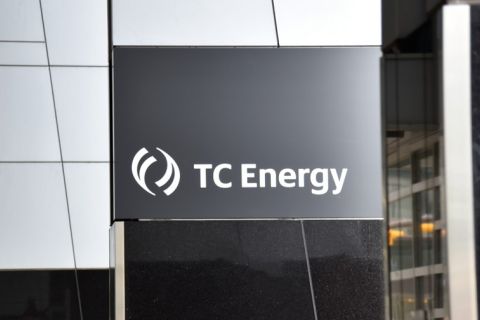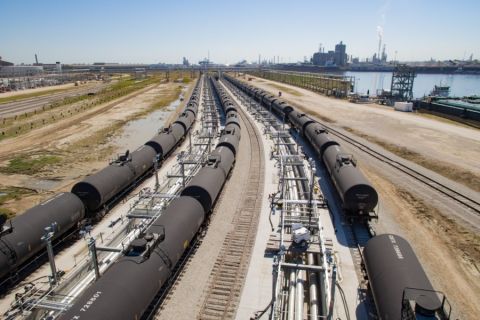
(Source: Shutterstock)
Hydrogen’s potential as a decarbonization tool has producers eyeing billions of dollars in projects—and watchers wondering when demand will take off. But the market will determine which applications will be adopted with policy and collaboration at play.
“This is not to say we can’t try to tip the scales a bit,” said Mark Klewpatinond, Exxon Mobil’s low carbon solutions’ global business manager for hydrogen.
The U.S. energy giant—which has upstream, product solutions and low carbon solutions business lines with one of the world’s largest integrated fuels, lubricants and chemicals operations—has been in the hydrogen business for multiple decades.
The company sees the low-carbon energy source, combined with carbon capture, as a way to abate post-combustion emissions.
“We can market that hydrogen to customers for multiple use cases, such as fuel switching out of natural gas, displacing existing gray hydrogen, converting to ammonia for energy exports … and potentially for use in heavy transportation, so things like heavy-duty long-haul trucking,” Klewpatinond said June 28 at the Hydrogen Technology Conference in Houston.
The vision is part of Exxon Mobil’s efforts to tap into what it has called a $6 trillion molecules management opportunity, centered on hydrogen, carbon capture and storage (CCS) and biofuels. The company’s initial focus is on tackling energy-related CO2 emissions from electricity generation and industrial and commercial transport.
RELATED
Exxon Mobil Targets Multi-trillion Dollar Low-carbon Market
Molecular Transformation: Exxon Mobil Tackles the Energy Transition
Hydrogen, which has near-zero greenhouse-gas emissions, is used mostly today in petroleum refining and fertilizer production. However, backers see great potential in hydrogen to power fuel cells, generate electricity and be a transportation fuel, displacing carbon-emitting fossil fuels.
“When we determine the path of various hydrogen solutions” he said, “we consider available land, what policy is specified in terms of the type of hydrogen or the production method of that hydrogen, whether there are advantaged or excess renewables available, what is the hydrogen storage potential and the CO2 storage potential and obviously whether there is a supportive carbon market, among other factors.”
Backing blue
Though Klewpatinond said Exxon is agnostic when it come to the hydrogen colors, the company is firmly behind blue hydrogen. He called it the most scalable, cost-effective form of hydrogen available currently.
“Today we believe that hydrogen from renewables is costing two to three times more than the blue hydrogen and still remains challenging on scalability,” he said. “Blue hydrogen, however, is already showing its potential, and Exxon Mobil is investing accordingly. “
Exxon Mobil is building in Baytown, Texas, what could become the world’s largest low-carbon hydrogen plant when it starts up by 2028—producing about 1 Bcf/d of hydrogen. Exxon aims to capture more than 98% of the associated CO2 and store it underground. The plant’s CCS projects could store up to 10 million metric tonnes per year of CO2.
“Exxon Mobil is already…one of the largest hydrogen players in the world. We’ve been in the hydrogen production business for more than 100 years, believe it or not, and we produce and consume more than a billion tons each year in our refining and chemical operations,” Klewpatinon said. “We’re taking our learnings on the use of hydrogen at industrial facilities for our own Scope 1 emissions and educating our customers on best practices, ensuring that demand can be reliably met with our low carbon hydrogen supply.
“So, while we expect to make a final investment decision in 2024, producing low carbon blue hydrogen at our Baytown plant could reduce our onsite CO2 emissions by 30%.”
Policy, collaboration
However, to unleash the power and potential of hydrogen, government policies must be in place, he said, adding such policies need to be constructive.
“We know the energy transition will be extensive, but coherent government policy can help mitigate the risks, encourage growth and reduce costs across the board while speeding operations at the local, national and continental levels. In the EU, the U.K., Canada and the U.S., there's been several positive developments that can point the way forward.”
Tax incentives in the Inflation Reduction Act and hydrogen hub funding in the U.S.; renewable fuel mandates by the EU; the U.K.’s hydrogen strategy calling for 5 gigawatts of low-carbon hydrogen by 2030; and stackable investment tax credits in Canada were among the legislative moves mentioned.
“Ultimately, a unified global approach will be necessary for society to meet its push for net zero emissions effectively. To this end, we cannot underestimate the importance of business alliances and partnerships to coordinate technological standardization,” he said.
Those alliances include the Hydrogen Council and the Open Hydrogen Initiative.
Alliances also include partnering with peers. More than a dozen companies, including BASF, Chevron Corp., Dow, Phillips 66 and Valero have joined Exxon Mobil in exploring and implementing carbon capture in the Houston Gulf Coast area.
“We continue looking for partners, customers and collaborators to get this done,” Klewpatinond said.
Recommended Reading
Enterprise Gains Deepwater Port License for SPOT Offshore Texas
2024-04-09 - Enterprise Products Partners’ Sea Port Oil Terminal is located approximately 30 nautical miles off Brazoria County, Texas, in 115 ft of water and is capable of loading 2 MMbbl/d of crude oil.
TC Energy's Keystone Oil Pipeline Offline Due to Operational Issues, Sources Say
2024-03-07 - TC Energy's Keystone oil pipeline is offline due to operational issues, cutting off a major conduit of Canadian oil to the U.S.
TC Energy’s Keystone Back Online After Temporary Service Halt
2024-03-10 - As Canada’s pipeline network runs full, producers are anxious for the Trans Mountain Expansion to come online.
Canadian Railway Companies Brace for Strike
2024-04-25 - A service disruption caused by a strike in May could delay freight deliveries of petrochemicals.
Enbridge Fortifies Dominant Role in Corpus Christi Crude Transport
2024-03-20 - Colin Gruending, Enbridge executive vice president and president for liquids pipelines told Hart Energy the company’s holdings in South Texas are akin to a “catcher’s mitt” for Permian and Haynesville production.





